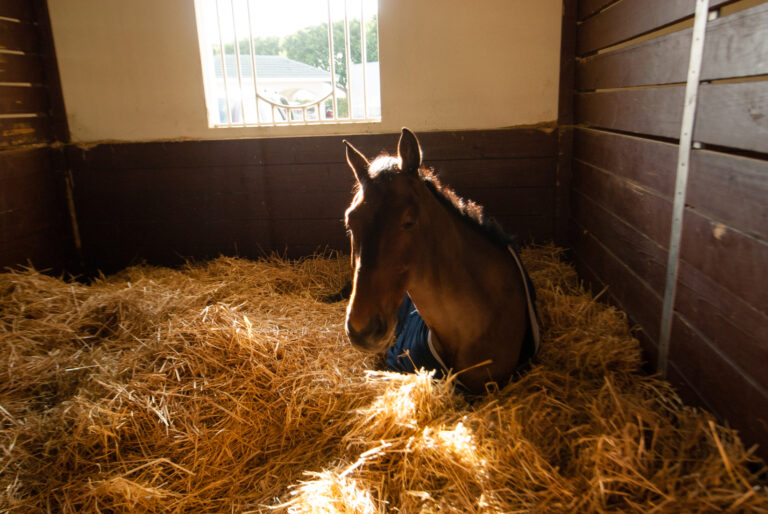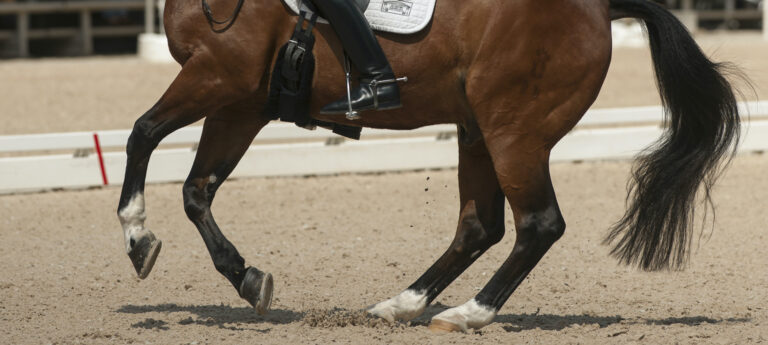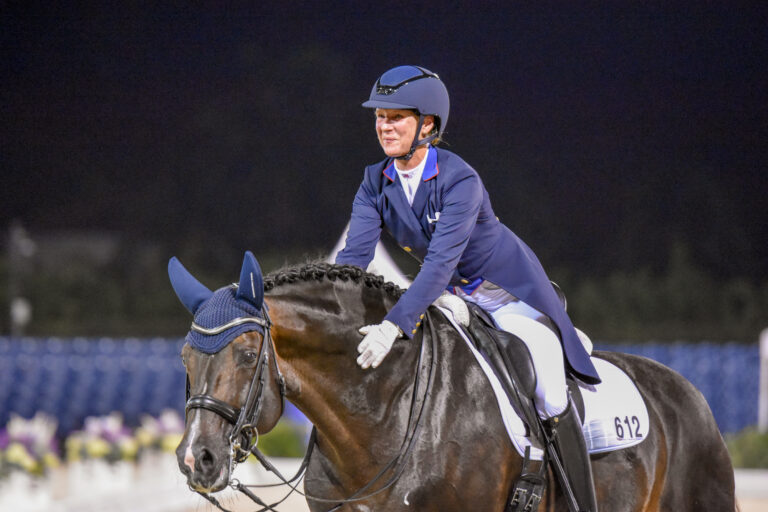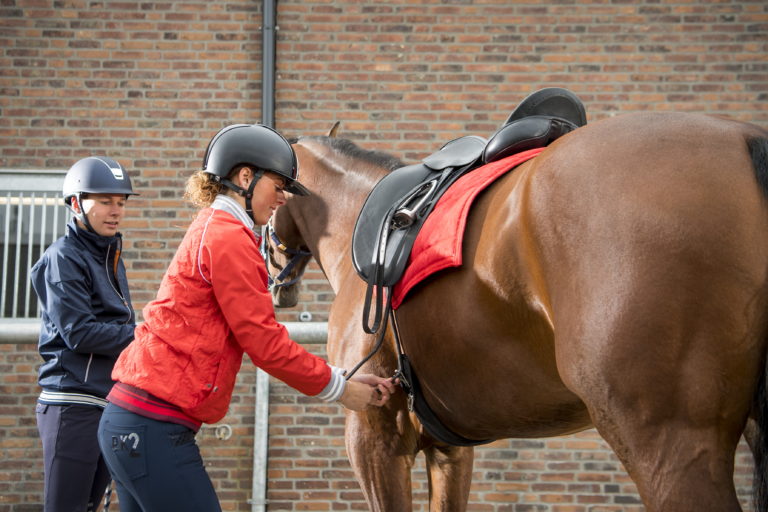Q: Every season our farm seems to be overrun by flies. We do our best to keep manure picked up and use fly tape throughout the barn. Are there any other tips that can help keep flies away? —Name withheld by request
A: The most common mistake horse owners make is not treating or eliminating the flies breeding and resting grounds. The second most common mistake is treating all fly populations located on the horse as if they are the same insect. Fly-control methods vary depending on the species of fly attacking your horse. Here are things you need to be aware of:
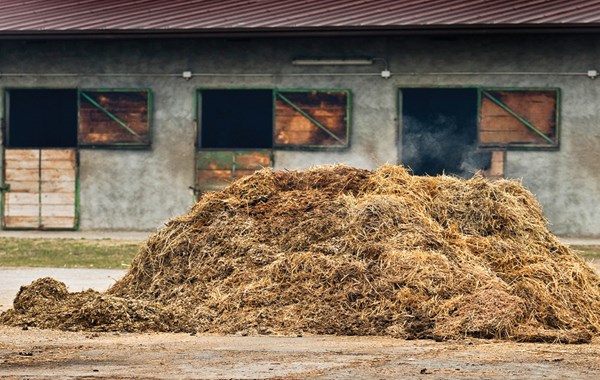
As an Amazon Associate, Dressage Today may earn an affiliate commission when you buy through links on our site. Products links are selected by Dressage Today editors.
Dealing with Manure. Sanitation should be your first defense in controlling fly populations. The life cycle from egg to adult in suitable environments is approximately 14 days for the house fly and 28 days for the stable fly, and adult females can lay up to 150 eggs every few days. Stable and house flies breed in manure, organic matter and soiled bedding. Therefore, keeping a stall clean is important in controlling breeding fly populations. However, after cleaning a stall, many horse owners will dispose of the soiled bedding in a compost manure pile too close to the barn. Manure piles should be located 100 to 200 feet away from the barn to limit flies returning to the area to annoy the stabled horses. Soiled bedding and manure should be stored in a dumpster or manure shed, where it can be hauled away for disposal or conveniently spread onto a nongrazing field on a regular interval based on the size of the waste pile.
In order to develop a waste-disposal plan, consider that the average horse produces between 2 to 2.5 cubic yards of soiled bedding and manure per month. A storage shed for manure for one horse for one year would require an area measuring 12 by 12 feet and allowing for a depth of 5 feet. These are averages that may vary depending on the amount of time a horse is located in the barn and the size of the animal. Disposal of the waste stored in the manure shed should be scheduled at least every six months. In addition, manure piles should be picked up from the pasture and paddocks and disposed of similarly. Though this weekly task may be a bit challenging and time consuming, in the long run, this practice will significantly lower the number of flies on a farm.
Know Your Types of Flies: Since fly-control methods may vary depending on the species of fly attacking your horse, it is important to know what type of flies you are dealing with. Stable flies and house flies are the more common breeds of flies in and around barns, with the stable fly inflicting a painful bite to horses and humans. Both female and male stable flies are blood feeders and usually attack the horse below the knee, causing the horse to stomp his feet or kick out. After feeding, the stable fly moves to a fence, barn wall or other surface to digest its meal. Most flies are only on the horse 5 percent of the time, so insecticides can provide only temporary fly control. House flies are nonbiting but extremely annoying to the horse as they loiter around the eyes.
Black flies are small biting flies that attack horses around the ears, neck and chest. They feed at dusk and dawn, and only the female black fly sucks blood and lays her eggs in water. Elimination of the black fly is best accomplished with larvicides applied to water sources and fly deterrents in and around the horse’s ears.
Horse- and deerflies are large biting flies that take a blood meal from the horse and fly away for three to four days until it is time to feed again. Deer-fly bites are very painful, and most topical pesticides are ineffectual. Fly control is best achieved by providing shelter for the horse away from the horse- and deerfly and eliminating muddy and wet areas where the female fly will lay her eggs. Box traps and some baited sticky traps may be effective in controlling the adult fly, and fly predators can reduce larvae and egg numbers.
Botflies lay sticky eggs on the horse’s hair coat, including the areas of the lower leg, chest, shoulder, neck and flank. Scraping or picking the eggs off the hair coat will break the botfly’s life cycle and prevent potential poor health for the horse.
Horn flies are tiny little biting flies that are located on the back of a horse and reproduce in cow manure only.
Using Insecticides, Baits and Fly Predators: Since a fly is off the horse approximately 95 percent of the time, controlling flies in the horse’s environment may require residual insecticides, baits, fly predators, foggers and sprays applied at frequent intervals. Residual insecticides are applied to surfaces where the fly rests when off the horse. The fly droppings that appear as brown specks can identify these fly-rest areas for insecticide application.
Fly predators offer fly control by consuming fly pupae in the cocoon. Fly predators must be reapplied to the barn environment in sufficient quantities every three to four weeks or as recommended by the supplier.
Fly baits can attract and kill house flies but have minimal effect on biting flies. Horse owners need to locate the bait and fly traps away from the barn to distract the flies.
Feed-through insecticides (insect growth regulators) are fed to horses and are passed through the feces to interrupt developing maggots. Though effective in reducing fly production in manure, they will not address problems with fly development in other organic matter such as bedding and spilled feed.
Fly sheets, masks and boots are effective in eliminating appropriate landing surfaces for attacking flies. Housing the horse inside a barn or shed with forced-air circulation will deter many flies from landing on the horse.
Finally, a topical insecticide can be effective in controlling flies on the horse provided that it is labeled for use in horses, is used as directed and is effective against the particular fly species that is attacking the horse. Most of these repellants must be used at frequent intervals and in conjunction with environmental fly control.

Clara Ann Mason, DVM, is an ambulatory equine practitioner in Winfield, West Virginia. She frequently lectures on and has published multiple articles on equine abuse issues. She is actively involved with the AAEP and the AVMA and serves on Welfare Committees for both organizations.


